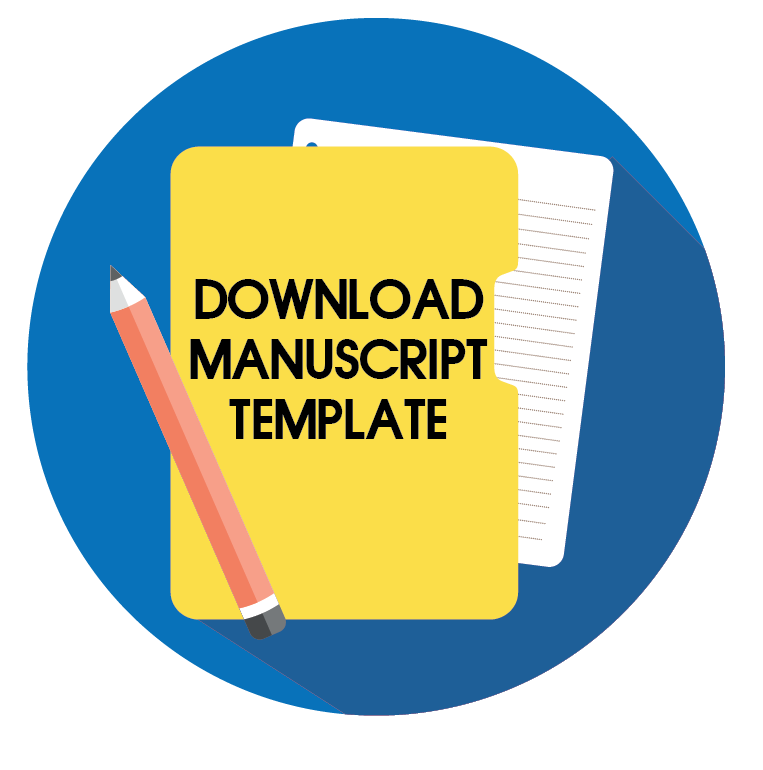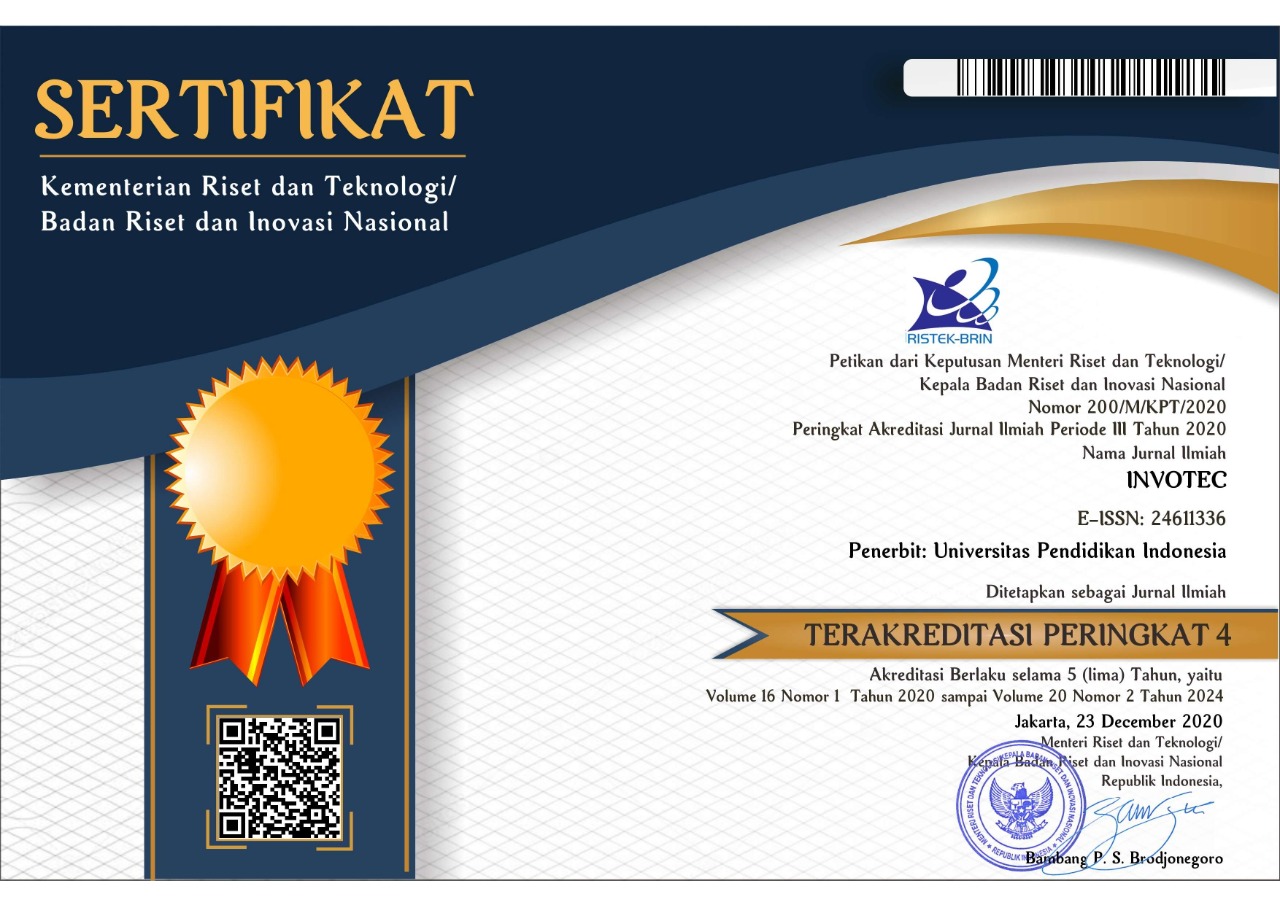Relevance of Vocational High School Curriculum with the Industrial Needs of Making Batik Competences
Abstract
This study aimed to identify the relevance of vocational high school curriculum with the industrial needs particularly related to batik making competences. The data collection was carried out through a survey to 35 batik industries within Priangan area, West Java province, Indonesia. The instrument employed was a questionnaire consisting of batik making competence units based on Standar Kompetensi Kerja Nasional Indonesia (SKKNI), Indonesia National Performance Competence Standards. The respondents of the study were owners of the batik industries requested to measure competence standards on SKKNI in relation to the competences needed within batik industry. The results of the study showed that in general, the competences on the SKKNI taught in vocational high schools were relevant to the competences needed in the industry. There were a few competences classified irrelevant which were Canting and stamping tools. The findings indicated that the competences taught in the schools are in accordance with the standards set in the SKKNI. It is expected that teachers are able to strengthen the competences taught in schools and regularly coordinate with the industry to keep the curriculum updated.
Keywords
Full Text:
PDFReferences
Azevedo, A., Apfelthaler, G., and Hurst, D. (2012). Competency development in business graduates: An industry-driven approach for examining the alignment of undergraduate business education with industry requirements. International Journal of Management Education, 10(1), 12–28.
Bauer, M., Brooks, K. S., and Sandrock, C. (2014). Industry Expectations and Academic Practice in Control Engineering Education – A South African Survey. IFAC Proceedings Volumes, 47(3), 12226-12231.
Baumann, T., Harfst, S., Swanger, A., Saganski, G., Alwerfalli, D., and Cell, A. (2014). Developing Competency-based, Industry-driven Manufacturing Education in the USA: Bringing together Industry, Government and Education Sectors. Procedia - Social and Behavioral Sciences, 119, 30–39.
Chen, M. H., Wu, Y. J., and Tsai, K. M. (2018). Building an industry-oriented business sustainability curriculum in higher education. Sustainability (Switzerland), 10(12), 1–14.
Ditchburn, G. (2012). Asia Pacific Journal of Education A national Australian curriculum : in whose interests ? Asia Pacific Journal of Education, 32(3), 259-269.
Doherty, C. (2015). The constraints of relevance on prevocational curriculum. Journal of Curriculum Studies, 47(5), 705–722.
Ellahi, R. M., Ali Khan, M. U., and Shah, A. (2019). Redesigning Curriculum in line with Industry 4.0. Procedia Computer Science, 151(2018), 699–708.
Feroz, A. (2018). Undergraduate Medical Curriculum: Relevance and Appropriateness to Community’s Health Needs. Biomedical Journal of Scientific & Technical Research, 5(4), 4655–4661.
Khoerunnisa, I., Widiaty, I., Abdullah, A. G., and Kuntadi, I. (2018). Does digital curriculum mapping improve curriculum alignment?. IOP Conference Series: Materials Science and Engineering, 434(1) 012303.
Kunyk, D., Craig-Broadwith, M., Morris, H., Diaz, R., Reisdorfer, E., and Wang, J. L. (2016). Employers’ perceptions and attitudes toward the Canadian national standard on psychological health and safety in the workplace: A qualitative study. International Journal of Law and Psychiatry, 44, 41–47.
Kurz, A., Elliott, S. N., Wehby, J. H., and Smithson, J. L. (2010). Alignment of the intended, planned, and enacted curriculum in general and special education and its relation to student achievement. Journal of Special Education, 44(3), 131–145.
Mølstad, C. E., and Prøitz, T. S. (2019). Teacher-chameleons: the glue in the alignment of teacher practices and learning in policy. Journal of Curriculum Studies, 51(3), 403–419.
Muktiarni, M., Widiaty, I., Abdullah, A. G., and Kuntadi, I. (2018). Automated curriculum alignment standards in K-12 schooling system. In IOP Conference Series: Materials Science and Engineering, 434(1) 012305.
Noddings, N. (2013). Standardized Curriculum and Loss of Creativity. Theory into practice, 52(3), 210-215.
Reitsma, R., Marshall, B., and Zarske, M. (2010). Aspects of “relevance” in the alignment of curriculum with educational standards. Information Processing and Management, 46(3), 362–376.
Shyan, J., and Lin, L. (2013). Journal of Hospitality and Tourism Management Training needs assessment in a hotel using 360 degree feedback to develop competency-based training programs. Journal of Hospitality and Tourism Management, 20, 61–67.
Smith, L. a., Anderson, V., and Blanch, K. (2016). Five beginning teachers’ reflections on enacting New Zealand’s national standards. Teaching and Teacher Education, 54, 107–116.
So, K., Kim, J., and Lee, S. (2012). International Journal of Educational Development The formation of the South Korean identity through national curriculum in the South Korean historical context : Conflicts and challenges. International Journal of Educational Development, 32(6), 797–804.
Thanikachalam, V. (2015). Curriculum Design for Industry Relevant and Interdisciplinary Postgraduate Programmes in Engineering and Technology. Journal of Engineering Education Transformations, 0(0), 58.
Thapa, B. (2018). Industry involvement in curriculum development: A case study in Nepal. Industry and Higher Education, 32(3), 200–206.
Widiaty, I., Riza, L. S., and Abdullah, A. G. (2015). A Preliminary Study on Augmented Reality for Learning Local Wisdom of Indonesian Batik in Vocational Schools. 2015 International Conference on Innovation in Engineering and Vocational Education. Atlantis Press.
Wijngaards-de Meij, L., and Merx, S. (2018). Improving curriculum alignment and achieving learning goals by making the curriculum visible. International Journal for Academic Development, 23(3), 219–231.
Yan Sunarya, Y. (2016). "Batik Sunda : Sebuah Pengantar dalam Konteks Desain Alternatif Kini". (September), 1–15. Available at https://doi.org/10.13140/RG.2.2.15506.66241
Young, M., and Conboy, K. (2013). Contemporary project portfolio management: Reflections on the development of an Australian competency standard for project portfolio management. International Journal of Project Management, 31(8), 1089–1100.
Ziebell, N., and Clarke, D. (2018). Curriculum Alignment: Performance Types in the Intended, Enacted, and Assessed Curriculum in Primary Mathematics and Science Classrooms. Studia Paedagogica, 23(2), 175.
DOI: https://doi.org/10.17509/invotec.v15i2.19635
Refbacks
- There are currently no refbacks.
Copyright (c) 2019 Innovation of Vocational Technology Education

This work is licensed under a Creative Commons Attribution-ShareAlike 4.0 International License.
This journal provides immediate open access to its content on the principle that making research freely available to the public supports a greater global exchange of knowledge.

This work is licensed under a Lisensi Creative Commons Atribusi-BerbagiSerupa 4.0 Internasional.


